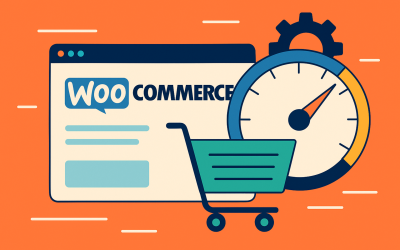Many small businesses struggle to maximize their return on investment (ROI) in web hosting. This article provides 11 proven strategies to help small businesses measure and improve the success of their web hosting efforts. These strategies include setting clear goals and objectives, understanding the target market, creating high-quality content, implementing SEO best practices, using paid advertising wisely, and leveraging email marketing. By measuring and analyzing data and implementing marketing automation, small businesses can maximize their ROI and achieve remarkable growth in their online presence.
Key Takeaways:
- Setting clear goals and objectives is crucial for maximizing web hosting ROI.
- Understanding the target market helps tailor marketing efforts and messaging.
- Creating high-quality content drives customer engagement and ROI.
- Implementing SEO best practices improves search engine visibility and organic traffic.
- Using paid advertising strategically can boost targeted traffic and ROI.
Set Clear Goals and Objectives
Setting clear goals and objectives is crucial for small businesses looking to maximize their ROI in web hosting. By defining specific, measurable, achievable, realistic, and time-bound (SMART) goals, businesses can create a clear roadmap for success. These goals should encompass both intermediate objectives, such as increasing awareness and engagement, as well as terminal objectives like driving conversions and signups.
Small business owners can utilize Avinash’s measurement model to guide them in developing goals and identifying the key performance metrics (KPIs) that will help measure progress. This model provides an effective framework for tracking and evaluating web hosting success. Regularly updating and revisiting these goals is essential to ensure they remain relevant and challenging, driving continuous growth and improvement.
To further enhance goal-setting efforts, businesses can leverage various tools and technologies to monitor and analyze their website’s performance. These tools can provide valuable insights into user behavior, traffic sources, conversion rates, and other metrics, helping businesses make data-driven decisions that optimize their web hosting ROI.
Table: Key Performance Metrics for Measuring Web Hosting Success
| Metric | Definition |
| Conversion Rate | The percentage of website visitors who complete a desired action, such as making a purchase or filling out a form. |
| Bounce Rate | The percentage of visitors who navigate away from a website after viewing only one page. |
| Page Load Time | The time it takes for a webpage to fully load and become visible to the user. |
| Organic Search Traffic | The number of visitors who arrive at a website through unpaid search engine results. |
By establishing clear goals, monitoring key performance metrics, and leveraging data-driven insights, small businesses can measure and improve the success of their web hosting efforts, ultimately maximizing their ROI and achieving remarkable growth in their online presence.
Understand Your Target Market
In order to maximize the ROI of web hosting for small businesses, it is essential to have a deep understanding of your target market. By creating detailed buyer personas, you can gain insights into the demographics, interests, pain points, and online behavior of your audience. These personas help you make informed decisions about where to focus your marketing efforts and how to tailor your messaging to each specific group.
When creating buyer personas, consider factors such as age, gender, location, occupation, and hobbies. Use market research and customer surveys to gather data and identify common characteristics among your target audience. This information will allow you to develop targeted marketing strategies that resonate with your audience and increase the ROI of your web hosting efforts.
By personalizing your content and messaging to address the specific needs and preferences of your target market, you can effectively reach and engage potential customers. Tailored messaging helps you establish a connection with your audience, build trust, and ultimately drive conversions. In addition, understanding your target market enables you to identify the most effective channels and platforms to reach them, ensuring that your marketing efforts are focused and efficient.
Key Takeaways:
- Create detailed buyer personas to understand your target market’s demographics, interests, pain points, and online behavior.
- Use market research and customer surveys to gather data and identify common characteristics among your audience.
- Develop targeted marketing strategies that resonate with your audience and increase the ROI of your web hosting efforts.
- Personalize your content and messaging to address the specific needs and preferences of your target market.
- Identify the most effective channels and platforms to reach your audience and ensure your marketing efforts are focused and efficient.
| Target Market | Demographics | Interests | Online Behavior |
| Young Professionals | Aged 25-35 Primarily urban Higher education | Career development Travel Health and fitness | Active social media users Regularly consume online content Shop online |
| Small Business Owners | Aged 35-50 Varied locations Entrepreneurs | Business growth Marketing strategies Financial management | Active on professional networking platforms Seeking business solutions online Interested in industry trends |
| Stay-at-Home Parents | Aged 30-45 Varied locations Raising children | Parenting tips Family-friendly activities Home organization | Engage in parenting forums and blogs Research family-related products online Seek recommendations from other parents |
Create High-Quality Content
When it comes to maximizing the ROI of web hosting for small businesses, creating high-quality content plays a crucial role. Content marketing not only helps with SEO efforts but also motivates consumers to engage with the brand and take desired actions. To ensure success, small businesses should focus on providing value to users through authentic content that resonates with their target audience.
One important strategy is to maintain a balance between informative and promotional content. Aim for 80-90% of the content to provide useful information and only 10-20% to be promotional. By doing so, small businesses can establish themselves as thought leaders and build trust with their audience.
By consistently providing high-quality content, small businesses can drive customer engagement and increase their web hosting ROI.
In terms of content types, small businesses should diversify their approach. They can create behind-the-scenes views, customer stories, product development updates, and engaging community content. This variety not only keeps the content fresh and interesting but also helps in catering to different customer preferences.
Table: Types of Content for Small Businesses
| Content Type | Description |
| Behind-the-scenes views | Showcasing the inner workings of the business to provide transparency and build trust. |
| Customer stories | Sharing success stories or testimonials from satisfied customers to inspire and encourage others. |
| Product development updates | Informing customers about new product features, improvements, or upcoming releases to generate excitement and anticipation. |
| Engaging the community | Involving the audience by asking for their opinions, running contests, or featuring user-generated content to foster a sense of belonging and loyalty. |
Furthermore, it is essential for small businesses to align their content with their brand’s voice and visual elements. Consistency in tone and style helps in reinforcing the brand identity, making it easily recognizable and memorable.
By consistently creating high-quality content that adds value to users, small businesses can boost customer engagement, enhance their brand reputation, and ultimately increase their web hosting ROI.
Implement SEO Best Practices
Implementing SEO best practices is crucial for improving the ROI of web hosting for small businesses. Search engine optimization (SEO) involves optimizing websites to rank higher in search engine results pages (SERPs) and drive organic traffic. By following SEO best practices, small businesses can increase their visibility, attract more organic traffic, and ultimately maximize their ROI in web hosting.
One important aspect of SEO is understanding the Google algorithm and its focus on quality signals. Google considers factors like time on site, social media engagement, site speed, user experience, technical factors, security, and mobile-friendliness when ranking websites. Therefore, it is essential for small businesses to optimize their websites accordingly.
Mobile-Friendliness and User Experience
With the increasing use of mobile devices, having a mobile-friendly website is crucial. Google prioritizes mobile-friendly websites in its search results, and users are more likely to engage with a website that offers a seamless mobile experience. Small businesses should ensure that their website is responsive and displays properly on various devices.
In addition to mobile-friendliness, user experience plays a significant role in SEO. Websites that provide a positive user experience, with easy navigation, fast loading times, and relevant information, tend to rank higher in search results. Optimizing user experience involves improving site structure, enhancing page speed, and providing valuable content to users.
“Optimizing user experience involves improving site structure, enhancing page speed, and providing valuable content to users.”
Keywords and Longtail Keywords
Keywords are another essential component of SEO. Small businesses should conduct keyword research to identify the most relevant and valuable keywords in their industry. These keywords should then be strategically incorporated into website content, including page titles, headings, alt tags, and meta descriptions.
Moreover, longtail keywords can be highly effective in attracting targeted traffic. Longtail keywords are more specific and have lower competition, making it easier for small businesses to rank for them. By targeting longtail keywords, small businesses can increase their chances of ranking higher in search results and attracting organic traffic that is more likely to convert.
| SEO Best Practices for Small Businesses | Description |
| Optimize website for mobile | Ensure your website is mobile-friendly and provides a seamless experience on various devices. |
| Focus on user experience | Improve site structure, enhance page speed, and provide valuable content to enhance user experience. |
| Conduct keyword research | Identify relevant and valuable keywords to target in your website content. |
| Target longtail keywords | Include specific longtail keywords in your content to attract targeted traffic. |
By implementing these SEO best practices, small businesses can improve their website’s visibility, attract organic traffic, and ultimately achieve a higher ROI in web hosting.
Use Paid Advertising Wisely
Paid advertising is an invaluable tool for small businesses looking to maximize their web hosting ROI. Online advertising enables us to reach our target audience with precision, ensuring that our message is delivered to the right people at the right time. By leveraging targeted ads, we can increase brand exposure and drive relevant traffic to our website.
When allocating our marketing budget, it is crucial to consider the potential return on investment (ROI) of different advertising channels. Platforms like Google Ads provide cost-effective pay-per-click advertising options, allowing us to optimize our ad spend and maximize our ROI. Through careful ad optimization and continuous monitoring, we can reduce wasted spending and improve the performance of our campaigns.
In order to make the most of our paid advertising efforts, it is essential to create dedicated landing pages that align with our ads. This ensures a seamless user experience and improves conversion rates. By designing landing pages that are visually appealing, easy to navigate, and contain clear call-to-action buttons, we can guide potential customers towards completing their desired actions, such as making a purchase or filling out a contact form.
By using paid advertising wisely and optimizing our landing pages, we can drive targeted traffic to our website and achieve a higher web hosting ROI. With the right approach, online advertising can be a powerful tool in our marketing arsenal, helping us to grow our small business and reach our goals.







